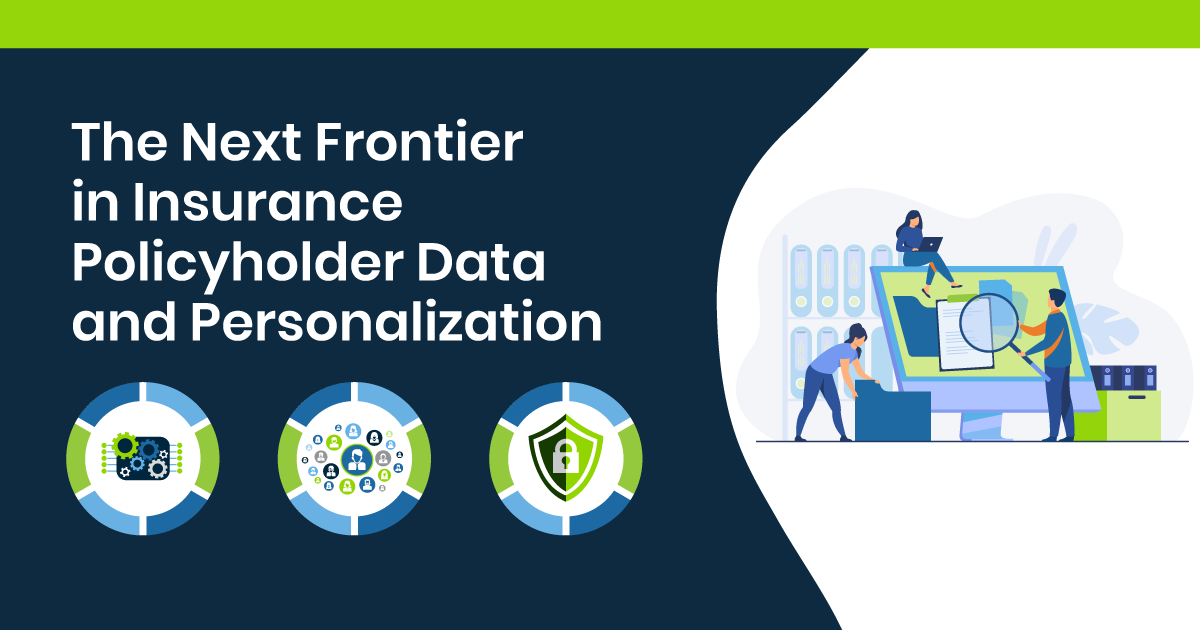
The Next Frontier in Insurance Policyholder Data and Personalization
The insurance industry’s wealth of data stands to improve underwriting accuracy, mitigate fraud and help control costs – but what about the policyholder? It seems reasonable that customer data should also be used to improve the policyholder experience. When insurers focus on personalization, both customers and insurers can benefit.
Policyholders Know the Value of Their Data
Data safety is an ever-present concern. Many consumers aren’t willing to hand over their information to just anyone – and that’s probably a good thing. At the same, however, many people are willing to make a deal for their personal data in exchange for something they want.
Just look at the results of a recent study from Capco1. According to the poll, 72% of consumers say they would share personal data in exchange for cheaper insurance. Among people aged 18 to 24, 87% are willing to trade data for discounts. The study also found that 57% of consumers want insurers to provide a better online experience.
A Lack of Personalization Can Drive Customers Away
Technology has led to a surge in communication options, and people tend to have strong opinions about which options they prefer. You may have heard the stereotype about younger people never answering their phone — there may be some truth to it. According to HighSpeedInternet.com2, most Gen Zers and Millennials dislike calling people. The study found that 88% of Millennials would rather text than call, and 52% say they get anxious taking calls.
Insurers may try to appeal to a wide consumer base by offering multiple communication channel options, but that alone may not be enough. A study from Smart Communications3 found that 61% of consumers say that getting communication through the wrong channel leads to frustration.
Customers just don’t want options when they’re trying to contact their insurers; they also want options when being contacted. They want to receive personalized communications over their preferred channels. This means that insurers need to know their customers’ data preferences in order to personalize the whole policyholder experience.
What About Personalization and Customer Engagement?
Imagine being able to quickly reach out to policyholders through their preferred digital channels. It’s not only helpful during policy lifecycle events, such as pending cancellations, pending renewals, or digital claim payment notifications, it can be crucial during severe weather events or when area burglaries have occurred. Proactively engaging your policyholders with personalized messaging increases trust, transparency, and retention. It’s a win-win!
From Personalization to Hyper-Personalization
Hyper-personalization uses artificial intelligence and automation to create personalized experiences. According to Deloitte4, “Through hyper-personalization, companies can send highly contextualized communications to specific customers at the right place and time, and through the right channel.” When it’s done right, the result is improved customer satisfaction, reduced costs and maximized revenues.
For the insurance industry, hyper-personalization holds tremendous potential that hasn’t really been tapped yet. In an interview with Canadian Underwriter5, the senior vice president of data science and chief data officer at Aviva Canada said, “We talk about hyper-personalization [of the customer experience], but very little of that actually happens [right now]. From a technology point of view, it’s a big task. And that’s what I think the future three to five years from now holds for us.” In the meantime, the property and casualty insurance industry is investing in the AI that will be needed for the hyper-personalization revolution.
Payments Should Also Be Personalized
Insurance customers want to be able to make premium payments using the method they prefer. They also want to receive insurance payments through the method they prefer – and for a lot of people, that’s not going to be a paper check that takes days to arrive.
According to PYMNTS6, 49% of consumers have gotten used to digital payments because of the pandemic. Digital disbursements are becoming more common, but they still only account for 17% of all disbursements from investment accounts, income, insurance claims and product purchases.
For insurers trying to deliver a personalized experience that stands out, this is an opportunity. Give customers the payment options they want — before your competitors do.
Are You Giving Customers the Personalized Experience They Want?
Customer data and personalization are changing expectations. Modern insurance customers expect to receive options that are tailored to their needs, and that includes digital engagement and insurance payments. Start giving your policyholders the choices they want. At One Inc, we provide smart solutions for forward thinking insurers who want to provide their customers the choice, convenience, and control they need and expect.
Sources:
- https://www.capco.com/about-us/newsroom-and-media/capco-insurance-survey-press-release
- https://www.highspeedinternet.com/providers/wireless#survey
- https://www.smartcommunications.com/benchmark-study/
- https://www2.deloitte.com/content/dam/Deloitte/ca/Documents/deloitte-analytics/ca-en-omnia-ai-marketing-pov-fin-jun24-aoda.pdf
- https://www.canadianunderwriter.ca/insurance/look-for-ai-to-hyper-personalize-customer-experience-in-3-5-years-aviva-exec-1004210377/
- https://www.pymnts.com/digital-payments/2021/after-covid-consumers-more-comfortable-with-digital-payments/
Tags: Payments, Digital Engagement

Written by The One Inc Content Team
The One Inc Content Team strives to provide valuable insights about digital trends and payments innovation for the insurance community.
Want to read more articles like this?

